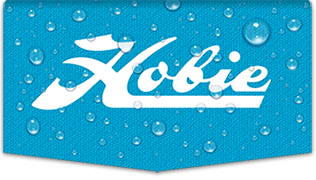Secrets of the Mirage Drive failure.
Herein lies a long tale. Will it reveal potential improvements for the Mirage Drive? Correct some problems people have complained about? Can I have renewed faith in bad weather conditions?
Only the shadow knows, and maybe those that can wade their way through a very long post. Hopefully that includes some Hobie engineers that are not caught up too much in aloha Friday..
OK here's the truth. I fouled up my Mirage Drive myself. I had had no problems since I replace my failed pedal/crank assembly unit.
Last Sunday I launched in the dark off a concrete ramp. I didn't shove off strong enough, and also failed to see a small incoming swell. Pushed back when I jumped in, the Mirage drive clobbered the ramp. MIA CULPA as much as I might want to blame Matt Miller.

I quickly found out trying to pedal that the front sail mast of the drive had come lose.
Jumped out, pulled the drive, flipped up the rudder, and dragged yak to shore. Got big flashlight, and repair tools out and got to work.
Figured I had to disconnect the tension screw. Did that. Got the allen wrench out, backed out the set screw and removed sail from mast. Then only (in the dark with only flashlight), could I see the mast enough to rotate it enough to make sure the flat area would meet the set screw.
Note. Solved this problem later. See below.
Inserted mast, tighten set screw,mounted sail, reassembled nut & bolt through tension screw, tighten up tension adjustment, back in yak with light dawning off to fish.
I'm out a VV FAD 3.5 miles off coast. Front mast comes off . SH^%!! To make a long story short using sail fought small current with sail, while placing mast back on. Got home only doing it twice, jamming mast back into sprocket without taking off tension screw retaining bolt and nut in bobbing sea. Difficult to make sure mast was lined up right.
Home I took all apart. First thing I did was put the masts in the vice. Notched them 15/16ths from the end 180 degrees opposite from the flat section. Applied red fingernail polish in grove. Now I could easily line the mast up correctly with the set screw hole. Reassembled. Next day wife and I enjoyed a short training session. No problema.
The day after that Wednesday, out to fish. 15 minutes into trip front mast comes off. The hell with it. Perfect conditions 8-10 knot wind off Keauhou, small swells. no bad weather in sight. Sailed most of day. Fishing was poor and did not interfere with fixing front drive mast 4 to 5 times. Biggest fear was dropping allen wrench. Should probably carry 3 of them for safety sake.
Finally took the thing off and went in on one sail. You still move pretty fast.
So what was wrong?
I had not observed anything wrong with the sprocket on the notching assembly day. Closer inspection was needed. My first fix was to try to put plumber's waterproof thread tape on the set screw to keep it from back out. But maybe there was something else.
I started with the mast itself. The upper edge of the cut out flat part had been squished into a slope, versus straight up cut. Hard to see in these shots though the dark shadow at the upper end of the flat cut indicates a slope..[click to enlarge].


Here's another view, this time of the set screw that got squished on the left, versus a new one on the right.:

So you have a slope on a slope situation.
Let's look at the sprocket itself.

Note the angle of the set screw hole to the mast hole. It's at about 45 degrees.
I have put them together to illustrate.

The angle of the set screw against the mast means only one edge of the screw is being retained by the mast edge. With the mast and set screw squished (BY ME NOT HOBIE!!) means the mast would easily slide out under strain (it did this once after reassembling at sea while I was under sail without even pedaling).
I suspect this problem is behind anyone experiencing their masts dropping out.
So it seems:
1. Your repair kit should contain a spare mast besides the recommended , sprocket, and set screw, or even a couple of each if your touring.
2. Maybe some plumber's tape for the set screw to keep it backing out of the sprocket (haven't tied this yet on failed unit).
3. Hobie might look at getting the flat surface cut in the mast angled so the set screw meets it flat on versus at an angle.. Might lessen effect of any squishing incident.
4. Possibly design in a breaking part when drive hits something, making it easy and cheap to fix.
Comments including how to salvage a mast (set scews are too cheap to mess with) ?
















